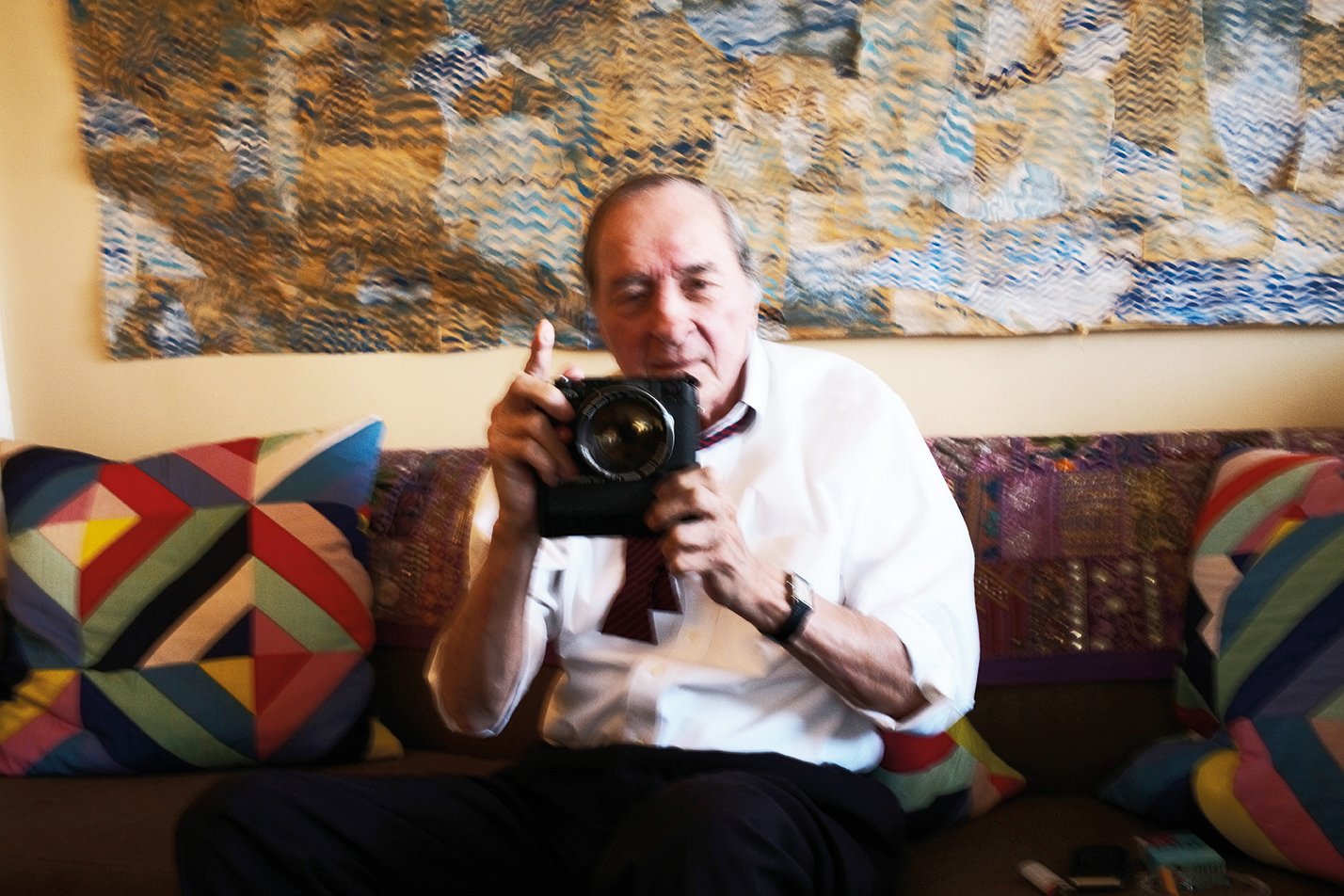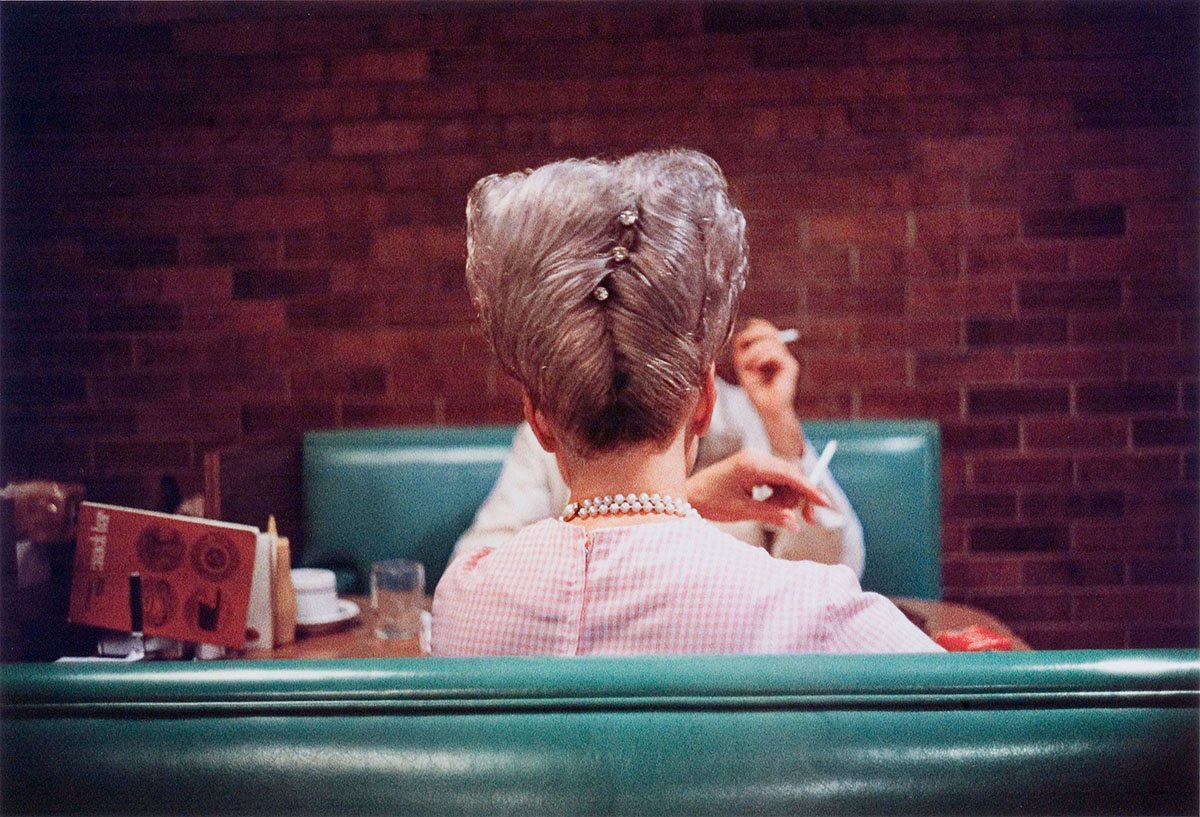William Eggleston
Portrait by Bill Brown
William Eggleston, often hailed as the godfather of color photography, revolutionized the medium with his vibrant depictions of everyday life in the American South. His work transcends mere documentation, capturing the essence of his subjects with a unique blend of color, composition, and a keen eye for the extraordinary in the mundane.
Early Life and Career
Born on July 27, 1939, in Memphis, Tennessee, William Eggleston grew up in the culturally rich environment of the southern United States. His early life was marked by a profound interest in visual arts, which led him to study at various institutions, including Vanderbilt University and the University of Mississippi. However, it was his time at Harvard that proved pivotal, as he prepared his first significant portfolio, “14 Pictures” (1974)
Photographic Style and Techniques
Eggleston’s photographic style is characterized by its vibrant use of color and unorthodox composition. His shift from black and white to color photography in the mid-1960s marked a significant turning point. Utilizing the dye-transfer printing process, Eggleston achieved rich, saturated colors that became a hallmark of his work. This process, typically reserved for commercial applications, allowed him to manipulate each color individually, resulting in striking images like “The Red Ceiling” .
Eggleston’s technique often involved shooting without a viewfinder, akin to a shotgun approach, which he likened to a more intuitive and less calculated method of capturing moments. This approach contributed to his distinctive “snapshot” aesthetic, characterized by spontaneous, candid compositions that evoke a sense of immediacy and authenticity .
Career Highlights
Eggleston’s career is studded with notable achievements and exhibitions. His 1976 solo exhibition at the Museum of Modern Art (MoMA) in New York is often cited as a watershed moment in the acceptance of color photography as a legitimate art form . This exhibition, curated by John Szarkowski, featured works that highlighted Eggleston’s ability to find beauty and significance in ordinary scenes.
Over the decades, Eggleston’s work has been published extensively, with significant portfolios including “William Eggleston’s Guide” (1976), “The Democratic Forest” (1989), and “Chromes” (2011) . His images have graced numerous album covers and his influence extends into music, with the release of his own electronic soundscapes in 2017.
Photography Gear
Cameras
• Leica M6: Known for its precision and reliability, the Leica M6 was a favored camera for its compact size and exceptional lens quality, ideal for Eggleston’s street and documentary photography.
• Canon AE-1: This SLR camera provided versatility and ease of use, making it a staple in Eggleston’s gear for capturing spontaneous moments.
Lenses
• 50mm f/1.4: Often used for its ability to capture images in low light with a shallow depth of field, perfect for Eggleston’s intimate and detailed shots.
• 28mm f/2.8: A wide-angle lens that allowed Eggleston to include more context and environment in his compositions, enhancing the storytelling aspect of his photographs.
Film
• Kodachrome 64: Known for its rich color saturation and fine grain, this film was crucial in achieving the vivid hues that Eggleston’s work is celebrated for.
Photography Books
William Eggleston’s Guide was the first one-man show of color photographs ever presented at The Museum of Modern Art (MoMA) in New York, significantly altering the art world’s perception of color photography. This book, featuring 48 carefully curated images from over 375 taken between 1969 and 1971, showcases Eggleston’s mastery of color as a crucial compositional element. The guide’s textured cover, inset with a photograph of a tricycle and stamped with yearbook-style gold lettering, adds to its charm. The images, portraying everyday scenes in and around Memphis, exemplify Eggleston’s ability to find beauty in the mundane, offering practicing photographers invaluable lessons in composition, color usage, and the art of capturing everyday life with a refined, yet deceptively casual look.
William Eggleston: Chromes is a three-volume set that delves into over 5,000 Kodachromes and Ektachromes taken by Eggleston, chronicling his early experiments with color and composition. This collection, drawn from binders found in the Eggleston Artistic Trust, offers a rare glimpse into the evolution of Eggleston’s photographic style. The images capture early Memphis scenes and highlight Eggleston’s developing technique of creating balanced compositions from seemingly random objects. The “Chromes” provides a comprehensive view of how Eggleston’s eye for color and composition matured, demonstrating the process of refining one’s craft and the importance of exploring and experimenting with new techniques.
William Eggleston: The Outlands presents nearly one hundred previously unseen images from the 1960s and 1970s. This series captures the evolving American South through vibrant colors and nostalgic themes, establishing visual motifs that Eggleston would continue to develop throughout his career. The book includes a variety of memorable images, such as a wood-paneled station wagon in a rural setting and intimate portraits of Eggleston’s family. Accompanied by a fictional narrative from Rachel Kushner and scholarly insights from Robert Slifkin, this book offers photographers an in-depth look at Eggleston’s dynamic and experimental practice, emphasizing the importance of revisiting and reinterpreting familiar landscapes and subjects.
William Eggleston Portraits showcases a collection of Eggleston’s masterful portraits, highlighting his ability to elevate the commonplace to art through his unique compositions and use of color. The book features a range of subjects, from anonymous individuals in his hometown of Memphis to celebrities like Dennis Hopper and Eudora Welty. It also includes an essay, a chronology, and interviews with Eggleston and his family, providing new insights into his artistic process. For photographers, this collection emphasizes the significance of capturing candid moments and the narrative potential of portrait photography, offering inspiration for creating compelling and evocative images of everyday life.
Quotes
“I am at war with the obvious.”
“I’ve never taken the same picture twice.”
“I don’t know of any totally red pictures, except in advertising. The photograph is still powerful. It shocks you every time.” - Eggleston on the iconic “The Red Ceiling”.
“The world is so visually complicated, I don’t want it simplified.”
“I am afraid that there is nobody else in the world exactly like me, and I am afraid that there is nobody else in the world exactly like you either.”
Legacy and Influence
William Eggleston’s influence on photography is profound and far-reaching. By elevating color photography to an art form, he paved the way for future generations of photographers. His work has been compared to that of Saul Leiter, who also utilized color to transform street photography into a vibrant, expressive medium even thought Leiter is often more abstract. Similarly, Stephen Shore shares Eggleston’s fascination with everyday scenes and color, contributing to the evolution of contemporary photographic art.
Eggleston continues to inspire and challenge photographers to look beyond the surface, finding beauty and meaning in the overlooked corners of the world. His legacy is preserved through institutions like the Eggleston Artistic Trust and the Eggleston Art Foundation, ensuring that his contributions to photography will be appreciated for generations to come .
In conclusion, William Eggleston’s pioneering work in color photography has left an indelible mark on the art world, encouraging photographers to embrace color and the everyday with a fresh perspective.























Donec id justo non metus auctor commodo ut quis enim. Mauris fringilla dolor vel condimentum imperdiet.